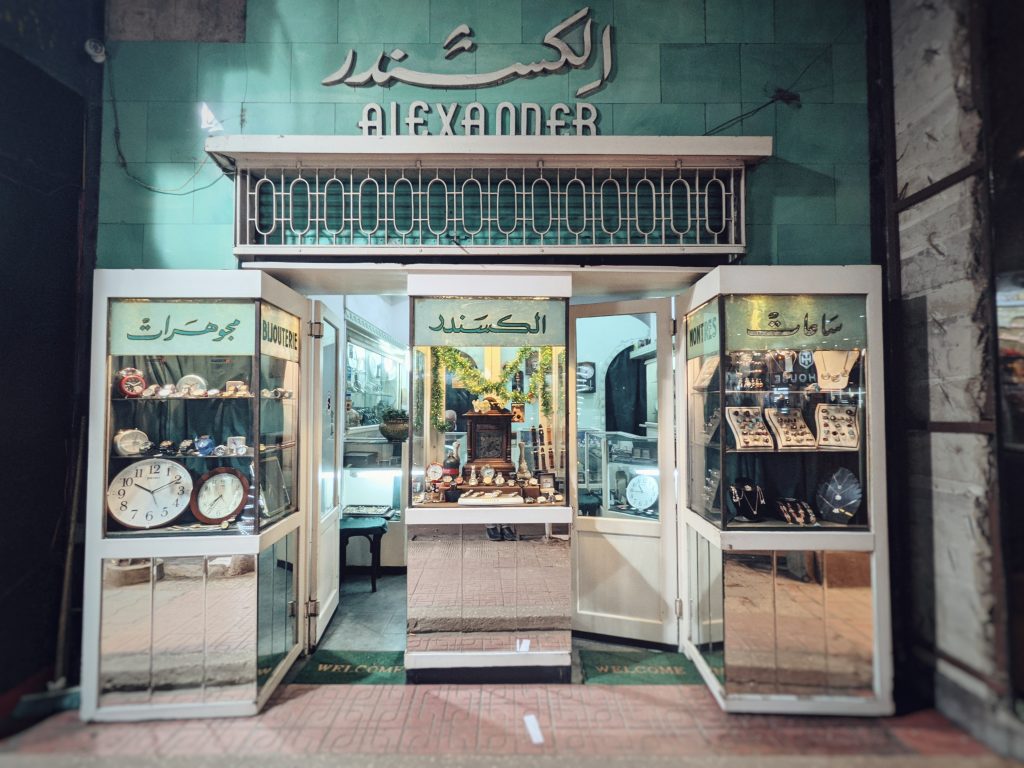Downtown Cairo is iconic due to its unique and impressive architecture, century-old cafes and institutions, and being immortalized in Egypt’s golden period of cinema and literature. But for many, its charm also comes from its beautiful shop signs that date back every decade to the late nineteenth century. Often with exciting typographies, expressive use of color, and memorable logos; these signs are a testament to and tell the stories of every generation to have gone through this neighborhood. With some of the older signs telling the story of an exploitative occupation and the commercial activities and material desires of the city’s resident foreigner population, and others telling the story of a new Egypt and new Downtown Cairo emerging from the 1952 revolution, the signs illustrate the modern history of Egypt in a tangible and physical way that books can’t quite do.
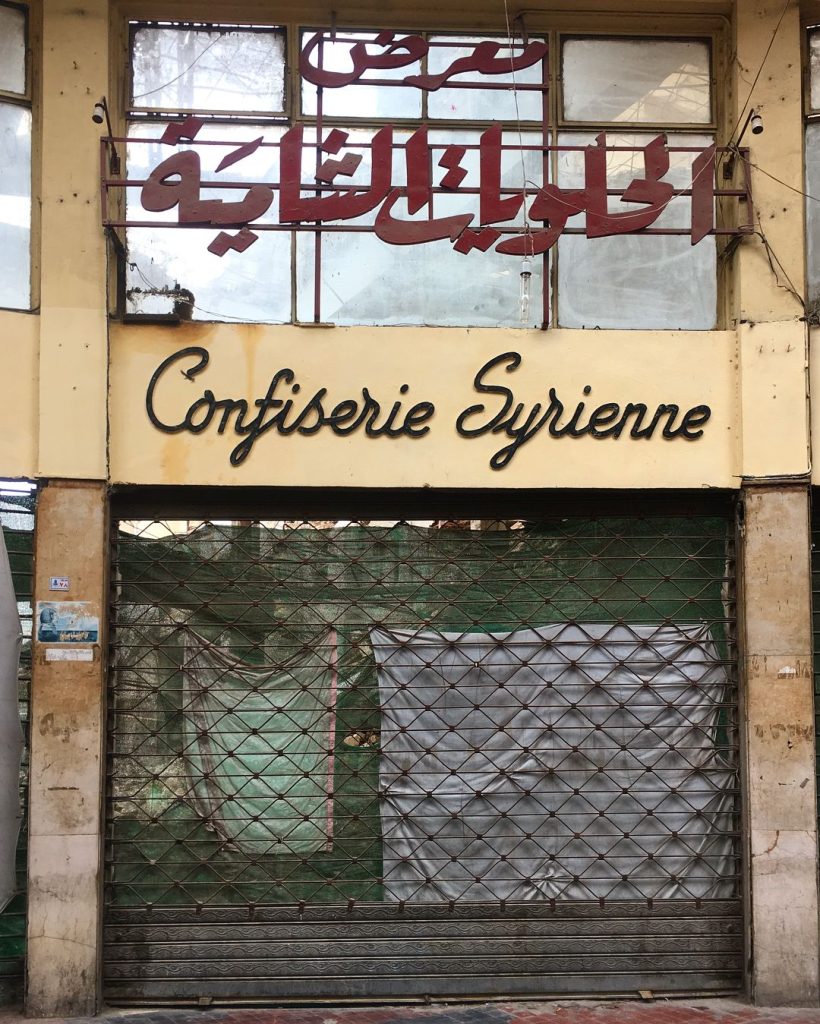
We can also see the ascendance and disappearance of certain communities, with Jewish family names written in Arabic and English on signs for shops that no longer exist and more prominently with Armenian businesses that used to play an important part in the country’s economy. Signs from the 1950s onwards also show the increased presence of Arab family names and the proud and prominent use of Arabic replacing the previously dominant use of French and English, illustrating the rise of a new class of Arab business owners and Arab nationalist pride.
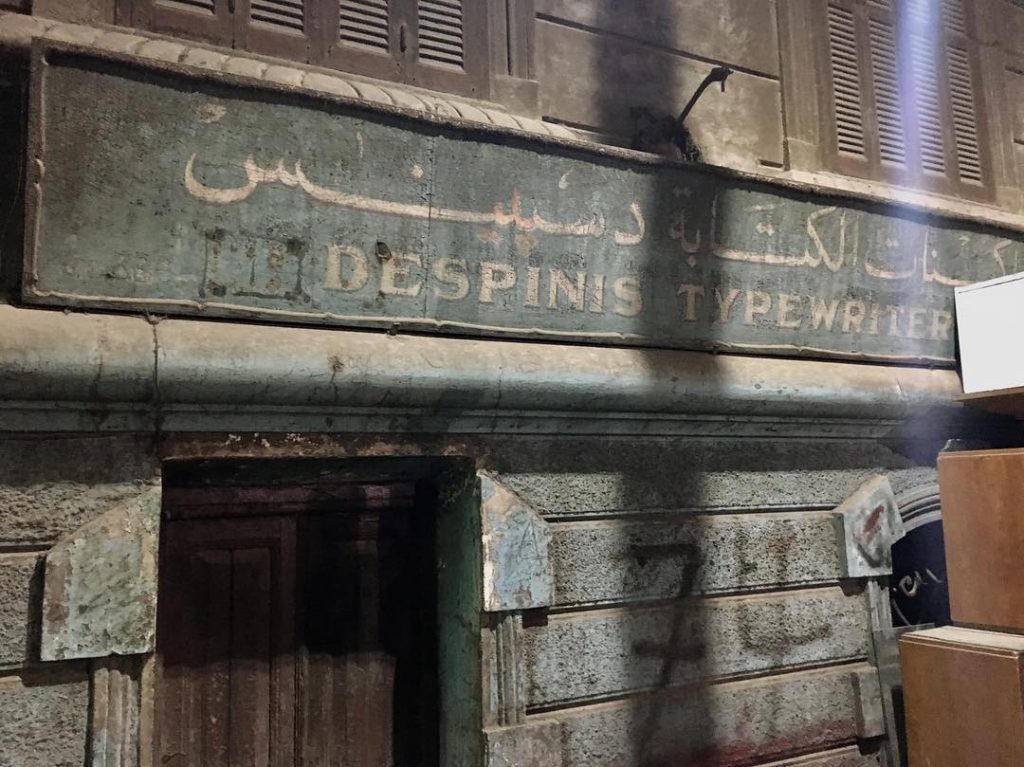
On the other hand, some of the shop signs simply show how life once was, for example, with skilfully hand-painted signs for typewriter shops, as illustrated well by the beautiful sign for Despinis Typewriters, whose shop now ironically houses antiques. Similarly, some of the shop signs also reflect the aesthetic tastes or technologies of past decades with punchy neon light signs and wooden cutouts of letters in the days before plastic signage and screen printing.
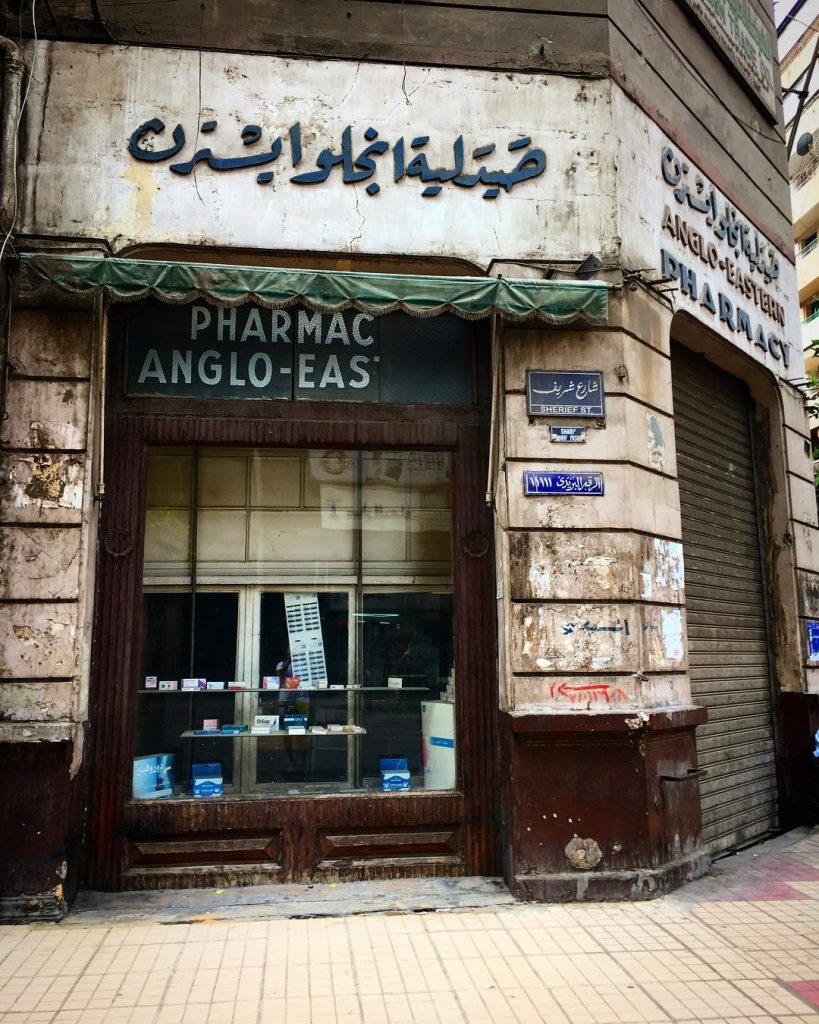
Mohammed Rahmy, a keen archiver and observer of contemporary Egypt who runs a well-written and informed blog called Urbanyzie documenting Egypt’s buildings, shops signs, and other aspects of the urban fabric along with their stories, explained to us the appeal of these signs by stating, “they tell me a small story about the history of my city.” On top of this, Rahmy spelled out how looking at these signs is “not like reading words in a book or article, it’s there. It’s a sign with fonts, typography, and all of that. It gives a very vivid and colorful perspective that’s added to the modern history of Cairo.”
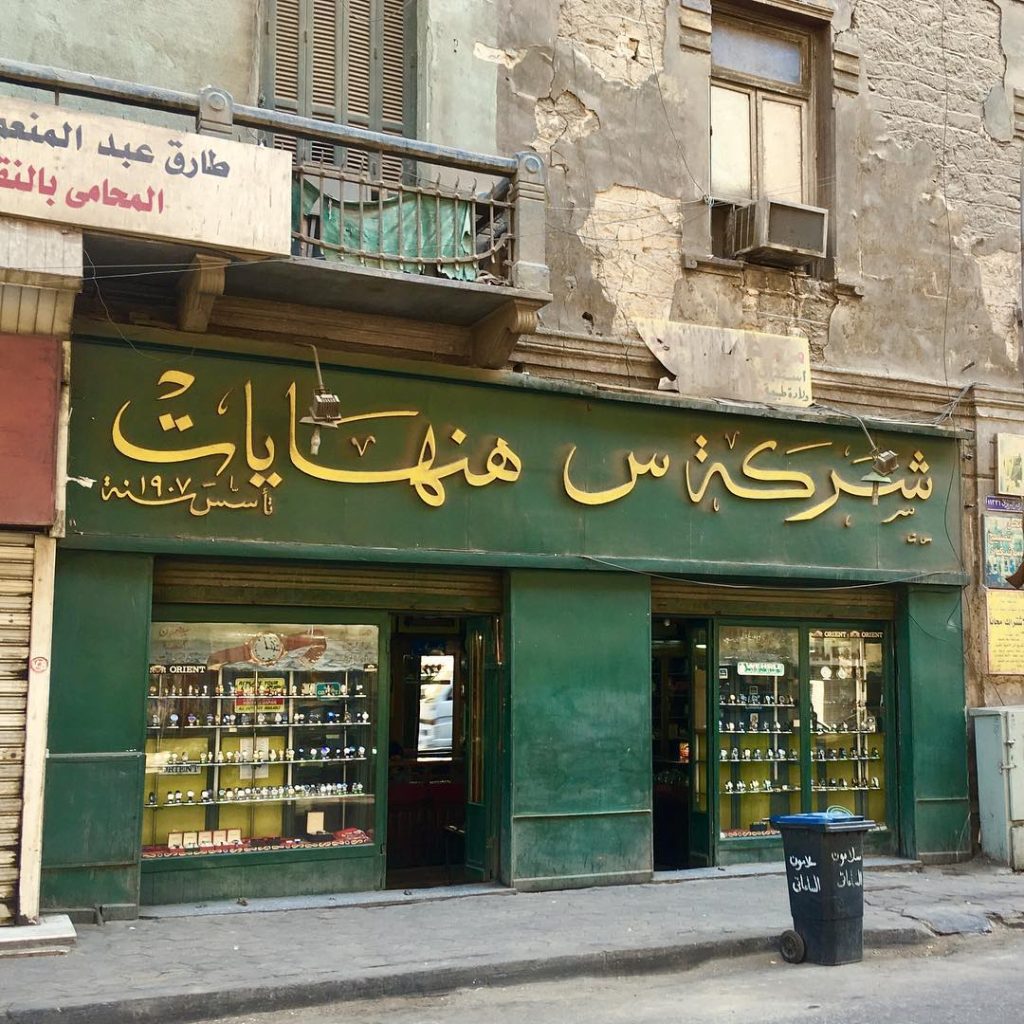
However, many of these fascinating signs have disappeared over time and in recent months have gone because of a restoration project aiming to harmonize the facades of buildings across Downtown Cairo. Mohammed Rahmy described how, “In the past couple of years specifically, there’s been a major renovation project that Downtown Cairo and Islamic Cairo has been witnessing”. While acknowledging that there have been “lots of improvements, lots of paint jobs, and all of that”, Rahmy picked up on and brought to the attention of many how some of Downtown’s iconic and fascinating shop signs were being negatively impacted.
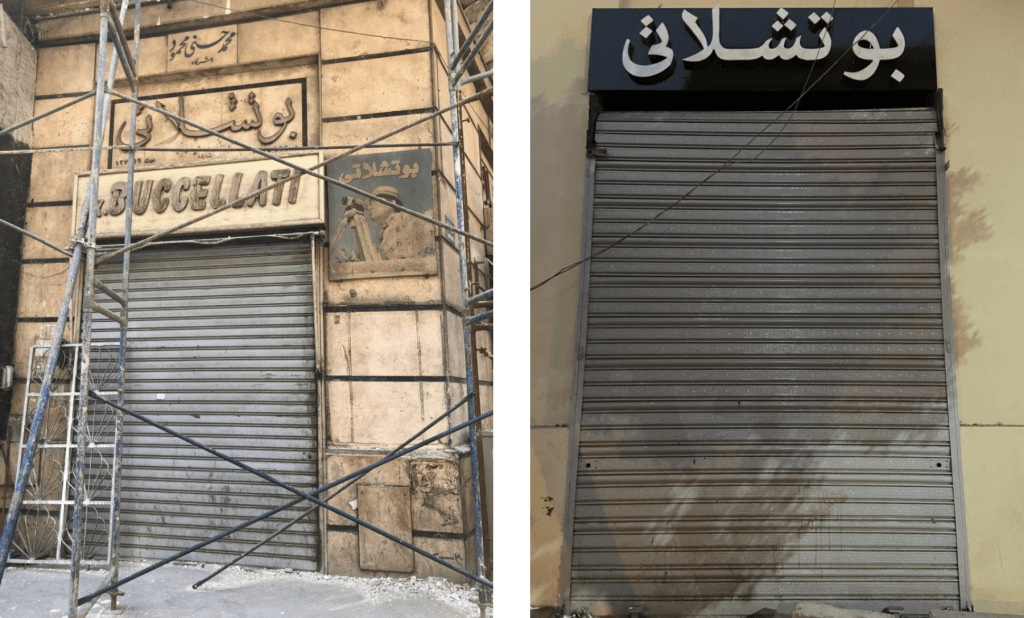
“Some signage disappeared, some signage was removed temporarily, and some signage was actually revealed”, Rahmy explained, as efforts to harmonize, beautify, and unify the faces of buildings in Downtown Cairo saw the replacement of the existing shop signs with new signs following a strict color code and typography. On Mostafa Kamel Square, which seems to have been the epicenter of recent development works, Rahmy described how decades-old unique and characterful signs for shops like Buccellati and Lotus stationery were removed and replaced with “new ones that are soulless and that have no identity, while the ones before told a story of sorts.”
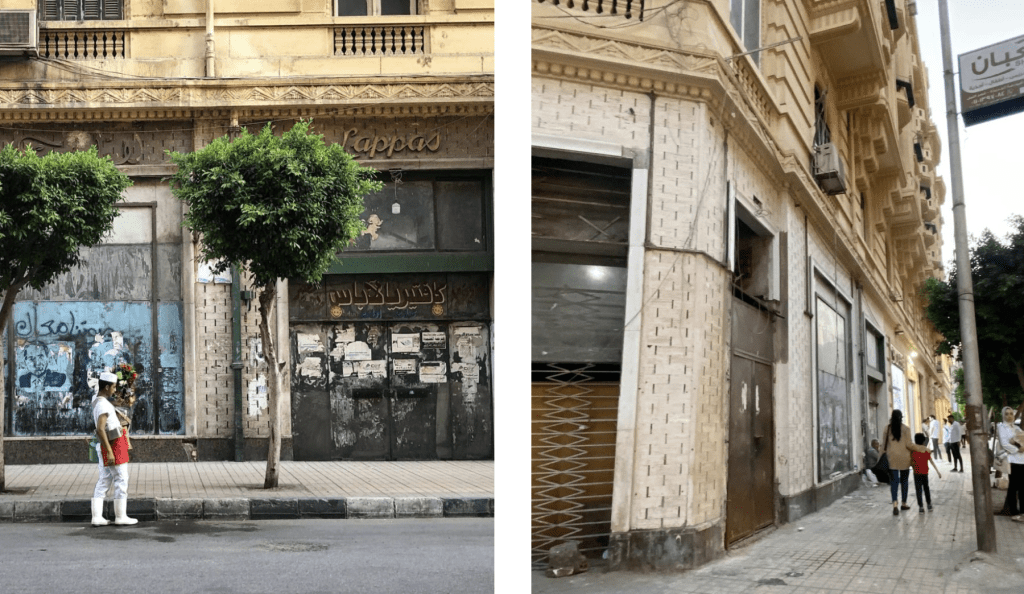
“Standardization is great, but there’s a limit to it and we need nuance. We want to see harmony, but not standard presentation”, Rahmy commented. Looking towards a solution, Rahmy described how “It can’t be a one size fits all solution” and that how “we as people have a huge responsibility to amplify these stories and mobilize interest in the topic and then to lobby to protect them.” Making the very important point that the state’s “priorities are so many that the issue of signage probably ranks quite low”, Rahmy warned against an oppositional and defeatist tone and how a productive effort could be made to explain and promote why restoration efforts should preserve interesting and beautiful shop signs from all decades, important to both the identity of Downtown Cairo and as a record of Egypt’s modern history.
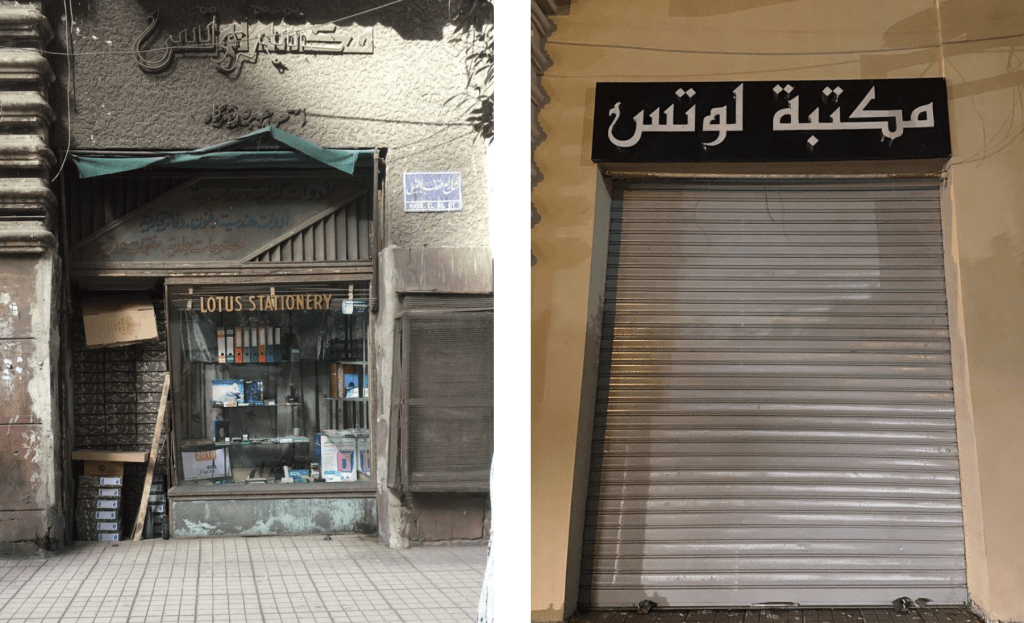
While Downtown Cairo has lost some beautiful signs over the years for all kinds of reasons, the neighborhood is still home to numerous signs that stand out for their design, quirkiness, or historical importance waiting to be discovered on walks through the area. They may not be as old as monuments from ancient Egypt or as grand as palaces, mosques, and sabils from the Mamluk era. But, they tell another story about Egypt’s history that is just as important to know about and understand and is a beautiful part of the visual fabric of modern-day Cairo that would be sadly missed if they were to disappear.


